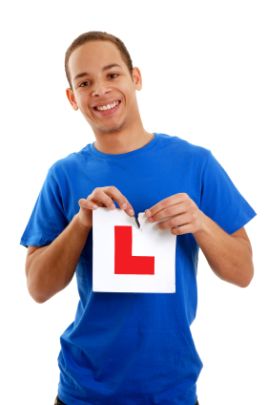Towing a load such as a caravan
When you tow a vehicle such as a caravan, it is clearly the case that driving conditions will be very different, and much more so again than simply having a heavier load or having a roof rack fitted.
For this reason many driving schools would now recommend that you attend a training course on towing such a load before attempting to do so on the roads - for your own safety and also that of your fellow road users.
There are training courses that will cover the sorts of things you will need to know such as how to load safety, and how to adjust your driving methodology to cope with the considerable differences that come with driving with a caravan or trailer being towed behind the car.
You will need to particularly practice things like manoeuvring in a small space, like for instance will be required when parking. Don't put the pressure on yourself to do this for the first time when you are in a tight space with lots of people watching! Drive you a quiet place such as a car park and practice reversing and parking into a space where there is no danger of taking out another car if you misjudge it the first couple of times.
As with everything, practice makes perfect, so take the time to practice the finer manoeuvres before doing a proper journey. There are a range of checks that you should perform before moving off with a load to ensure that it is correctly hitched up and so on: you should consult the details and instructions provided with your trailer or caravan on how to connect it and the checks that you should perform before setting off on a journey.
Related Articles...
Your ignition system explained
The ignition system is of course an essential part of the technology that allows cars to function, and without it you would not get very far. But what does it do? Well the system provides the...
What causes accidents: overtaking
When you overtake a vehicle, there are often many things to consider.
First of all you need to ensure that it is, as far as you are aware, safe to do so. Therefore don't overtake close to...
What causes accidents: pulling out
One of the most typically seen accident that happens between vehicles in and around towns and city centres is the situation where two or more roads join each other.
At these there will be...
Your driving licence: getting it back
As the New Drivers Act article outlines, if you get six penalty points or more in the first two years of having a licence, then it is revoked and you have to retake both tests: the theory and the...
Driving and mobile phones
Some people are confused about the rules about using a mobile whilst
driving, whilst others know the rules and break them. You might see other
people driving with a phone to their ear but you...
The risk of accidents - some statistics
No-one wants to think that they will be involved in an accident, but being aware that an accident could happen to you and the statistics is important. Accidents happen to ordinary people, so anyone...
Testing your driving ability
The driving part of the test to assess if you are safe to let on the roads is called the practical test, and it lasts in the region of 40 minutes in total. The purpose is to assess if you can drive...
Car Driving Theory Topics
When studying for the car theory test it is important to understand the types of topics that will be covered.
The theory test is there to satisfy European Community regulations and so the...
Motorway Driving Tips
Driving on a motorway for the first time can be both exciting and a little daunting - exciting as it is something new whilst daunting as you won't have experienced driving on a motorway before...
What signs with a percentage mean
When you are driving in some places, the roads will be up and down in terms of gradient, which refers to how the height of the road changes as you move along it, just like on a hill.
When you...
Back to home page of driving theory test questions

